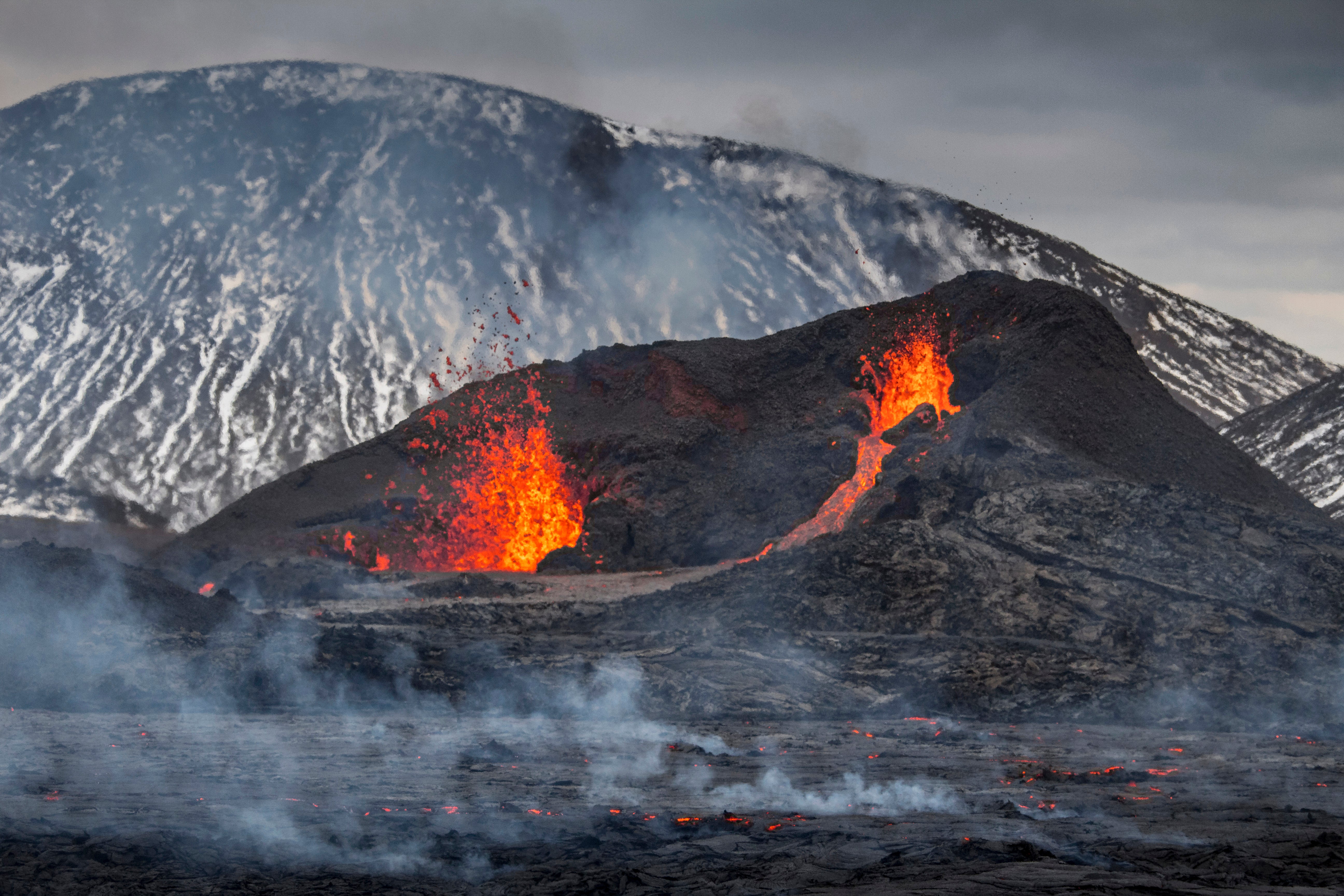Hikers scramble as new fissure opens up at Icelandic volcano
A new fissure has opened up at an Icelandic volcano that began erupting last month, prompting the evacuation of hundreds of hikers who had come to see the spectacle

Your support helps us to tell the story
From reproductive rights to climate change to Big Tech, The Independent is on the ground when the story is developing. Whether it's investigating the financials of Elon Musk's pro-Trump PAC or producing our latest documentary, 'The A Word', which shines a light on the American women fighting for reproductive rights, we know how important it is to parse out the facts from the messaging.
At such a critical moment in US history, we need reporters on the ground. Your donation allows us to keep sending journalists to speak to both sides of the story.
The Independent is trusted by Americans across the entire political spectrum. And unlike many other quality news outlets, we choose not to lock Americans out of our reporting and analysis with paywalls. We believe quality journalism should be available to everyone, paid for by those who can afford it.
Your support makes all the difference.Steam and lava spurted Monday from a new fissure at an Icelandic volcano that began erupting last month, prompting the evacuation of hundreds of hikers who had come to see the spectacle.
The new fissure, first spotted by a sightseeing helicopter, was about 500 meters (550 yards) long and about a kilometer (around a half-mile) from the original eruption site in the Geldinga Valley.
The Icelandic Department of Emergency Management announced an immediate evacuation of the area. It said there was no imminent danger to life due to the site’s distance form popular hiking paths.
The Icelandic Meteorological Office said the new volcanic activity wasn't expected to affect traffic at nearby Keflavik Airport.
The long-dormant volcano on the Reykjanes Peninsula in southwest Iceland flared to life March 20 after tens of thousands of earthquakes were recorded in the area in the past three weeks. It was the area’s first volcanic eruption in nearly 800 years.
The volcano’s proximity to Iceland’s capital, Reykjavík, about 32 kilometers (20 miles) away, has brought a steady stream of tourists to the area, even with the country in partial lockdown to combat the coronavirus. Around 30,000 people have visited the area since the eruption began, according to the Icelandic Tourist Board.
Live footage from the area showed small spouts of lava coming from the new fissure.
Geophysicist Magnus Gudmundsson said the volcanic eruption could be moving north from its original location.
“We now see less lava coming from the two original craters,” he told The Associated Press. “This could be the beginning of second stage.”
Iceland, located above a volcanic hot spot in the North Atlantic averages one volcanic eruption every four to five years. The last one was at Holuhraun in 2014, when a fissure eruption spread lava the size of Manhattan over the interior highland region.
In 2010, ash from Iceland's Eyjafjallajokull volcano shut down much international air travel for several days.